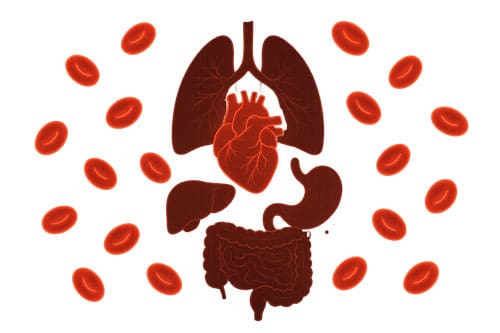Bloody Surgery: Hospital Readmissions Blamed On Post-Op Anemia In Patients Undergoing Major Surgery
Overview

In the aftermath of major surgery, the presence of anemia can heighten the likelihood of unplanned hospital readmissions, yet the precise correlation between the severity of anemia upon discharge and readmission risk remains unclear. Our study sought to elucidate this relationship by examining the hemoglobin levels at discharge and subsequent unplanned readmissions among patients who underwent various major surgical procedure
Conducting a retrospective cohort analysis within a single tertiary health service, we scrutinized patients who underwent major surgeries—orthopedic, abdominal, cardiac, or thoracic—between May 1, 2011, and February 1, 2022. The primary endpoint was unplanned hospital readmission within 90 days post-discharge from the index surgical intervention. Utilizing restricted cubic splines, we modeled the intricate, non-linear associations inherent in these relationships.
Our analysis encompassed 22,134 patients, with 14,635 included in the primary assessment, among whom 1,804 (12%) experienced at least one unplanned readmission. Notably, the odds of unplanned readmission escalated when the discharge hemoglobin concentration fell below 100 g.l-1 (p < 0.001). Subgroup analysis revealed a higher hemoglobin threshold for patients undergoing emergency surgery, with readmission odds beginning to rise at levels below 110 g.l-1 (p < 0.001) compared to elective procedures.
Furthermore, diminishing discharge hemoglobin levels were associated with amplified odds ratios (95% CI) of unplanned readmissions among patients undergoing orthopedic (1.08 (1.01–1.15), p = 0.03), abdominal (1.13 (1.07–1.19), p < 0.001), and thoracic (1.12 (1.01–1.24), p = 0.03) surgeries. However, this association was not observed in the context of cardiac surgery (1.09 (0.99–1.19), p = 0.07).
In conclusion, our findings underscore that a discharge hemoglobin concentration below 100 g.l-1 following elective procedures and below 110 g.l-1 following emergency procedures post-major surgery is linked to unplanned readmissions. These insights advocate for the inclusion of patients with discharge hemoglobin levels below these thresholds in future interventional trials aimed at mitigating postoperative anemia and curbing unplanned readmissions.
Introduction
Patients undergoing major surgery face significant risks of complications, which substantially impact healthcare resources. Identifying peri-operative risk factors for poor outcomes is crucial, with anemia being a significant concern due to its association with postoperative complications and patient recovery. While pre-operative anemia presents an attractive therapeutic target, its multifactorial nature and logistical challenges in pre-surgical treatment, especially in urgent cases, pose difficulties. Trials exploring the role of pre-operative intravenous iron indicate a potential for greater efficacy post-surgery, particularly in preventing unplanned readmissions. Shifting focus to postoperative anemia, affecting a large proportion of surgical patients, offers potential benefits, considering its association with increased mortality, disability, and readmission rates. However, existing studies lack specificity, necessitating a deeper understanding of the severity-response relationship between postoperative anemia and outcomes across various surgical specialties. Analyzing a comprehensive patient database, we aimed to identify a threshold hemoglobin concentration associated with unplanned readmission following major surgery, offering insights to guide future trials and treatment strategies.
Method
A comprehensive study conducted over a decade at a prominent tertiary referral hospital in Melbourne, Australia, examined surgical admissions encompassing various specialties, excluding obstetrics. The study involved patients aged 18 and above undergoing major elective and emergency surgeries, with a focus on specific procedures and a postoperative stay of at least 24 hours.
Ethical approval was obtained from the Austin Health Human Research Ethics Committee, with a waiver of informed consent. Data extraction was performed from the hospital’s electronic medical records, adhering to the STROBE statement guidelines.
The primary outcome of interest was unplanned hospital readmissions following discharge, which were meticulously evaluated to differentiate between planned and unplanned occurrences. Secondary analysis focused on assessing the number of days alive and out of the hospital within 90 days post-surgery.
Various factors were considered in the analysis, including patient demographics, comorbidities, surgical characteristics, blood transfusions, and complications during hospitalization. Statistical models, such as multivariable logistic regression and quantile regression, were employed to estimate odds ratios and changes in days alive and out of the hospital, respectively.

Pre-planned subgroup analyses were conducted to explore the impact of postoperative hemoglobin concentrations on outcomes across different surgical specialties and between elective and emergency procedures. Sensitivity analyses were also performed to address potential confounding factors, such as prolonged hospital stays and mortality during admission.
All statistical analyses were carried out using R Statistical Software, with significance set at p < 0.05. The study aimed to provide valuable insights into factors influencing postoperative outcomes and readmission rates, contributing to enhanced patient care and surgical management practices.
Result
In a comprehensive study involving a substantial cohort of 22,143 patients who underwent major surgical procedures, a rigorous analysis was conducted to elucidate the intricate relationship between postoperative hemoglobin levels and patient outcomes. After meticulous exclusions, a subset of 15,002 patients was selected for secondary outcome analysis, forming the basis for investigating unplanned readmissions. Regrettably, some patients experienced mortality either during follow-up or within the index admission period, leading to their exclusion from certain analyses. Ultimately, a cohort of 14,635 patients remained for primary outcome analysis, providing a robust dataset for assessing unplanned readmissions.
This cohort exhibited diverse demographic characteristics, with an average age of 66.1 years and nearly half of the participants being women. The median duration of hospital stay was 7 days, reflecting the complexity and extent of the surgical interventions involved. Notably, a substantial proportion (80%) of patients were found to be anemic upon discharge, underscoring the prevalence of this condition in the postoperative period.
The analysis revealed compelling insights into the association between discharge hemoglobin levels and unplanned readmissions. Patients with lower hemoglobin levels (< 100 g.l-1) at discharge were significantly more susceptible to experiencing unplanned readmissions, with approximately one-third of the cohort affected by this risk factor. Conversely, higher hemoglobin levels (> 130 g.l-1) were associated with a reduced likelihood of readmission, highlighting the importance of optimizing postoperative hemoglobin levels to mitigate adverse outcomes.
Subgroup analysis further delineated these findings, demonstrating a consistent association between lower discharge hemoglobin levels and increased odds of unplanned readmissions across various surgical specialties, except in cardiac surgery. However, the impact of hemoglobin levels varied depending on the urgency of the surgical procedure, with distinct thresholds observed for emergency versus elective surgeries.
An additional exploratory analysis focused on 90-day mortality (DAOH-90) reaffirmed the significance of postoperative hemoglobin levels in predicting patient outcomes. Patients with discharge hemoglobin levels below 80 g.l-1 experienced fewer days alive and out of hospital, underscoring the detrimental impact of lower hemoglobin levels on postoperative recovery.
However, intriguingly, the association between postoperative hemoglobin levels and DAOH-90 was attenuated after excluding patients who died following their index surgery, suggesting a complex interplay between postoperative mortality and hemoglobin levels.
These findings underscore the critical role of discharge hemoglobin levels as a prognostic indicator for both unplanned readmissions and postoperative mortality following major surgical procedures. They emphasize the importance of early identification and management of anemia to optimize patient outcomes and inform targeted interventions aimed at improving postoperative recovery and reducing healthcare utilization.
Conclusion
In a comprehensive retrospective cohort study, we investigated the correlation between hemoglobin levels at hospital discharge and subsequent unplanned readmissions following major surgery. Our findings revealed that discharge hemoglobin levels below 100 g/L were linked to an increased likelihood of unplanned readmission to the hospital. This association remained consistent across various surgical subgroups, including orthopedic, abdominal, and respiratory surgeries, albeit not in cardiac surgery cases.
Furthermore, in emergency surgery scenarios, we observed that discharge hemoglobin levels below 110 g/L were associated with heightened odds of unplanned readmission. We also identified that lower discharge hemoglobin levels, particularly below 80 g/L, correlated with a shorter median duration of hospitalization post-surgery (DAOH-90), a trend consistent across all surgical subgroups.
Our study underscores the significance of postoperative anemia as an independent risk factor for adverse patient outcomes, a condition prevalent in a substantial proportion of patients discharged after major abdominal surgery. Interestingly, while conventional definitions of anemia did not predict increased readmission rates, our analysis revealed that milder degrees of anemia, particularly with a hemoglobin cutoff of < 100 g/L, showed a significant association with unplanned readmissions.
These findings prompt a reevaluation of postoperative care protocols, especially regarding the management of anemia in the aftermath of major surgeries. The potential benefits of interventions such as intravenous iron therapy emerged in our study, suggesting that addressing postoperative anemia could mitigate the risk of unplanned readmissions.
Moving forward, future interventional trials aimed at addressing postoperative anemia and reducing unplanned readmissions should consider enrolling patients with discharge hemoglobin levels below 100 g/L in elective surgeries and below 110 g/L in emergency surgeries, particularly those undergoing orthopedic, abdominal, and thoracic procedures.
Despite the robustness of our study, certain limitations exist, including the retrospective nature of the data analysis and the possibility of incomplete records. Nevertheless, our findings provide valuable insights into optimizing postoperative care strategies and reducing adverse outcomes following major surgeries.

